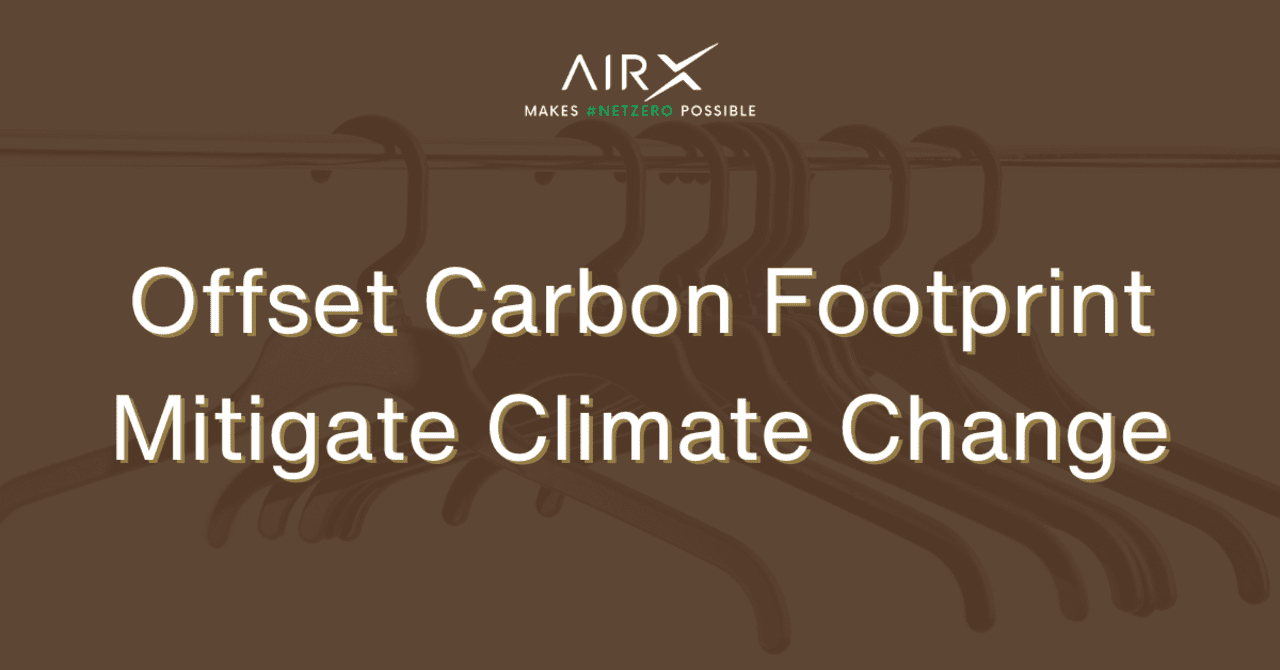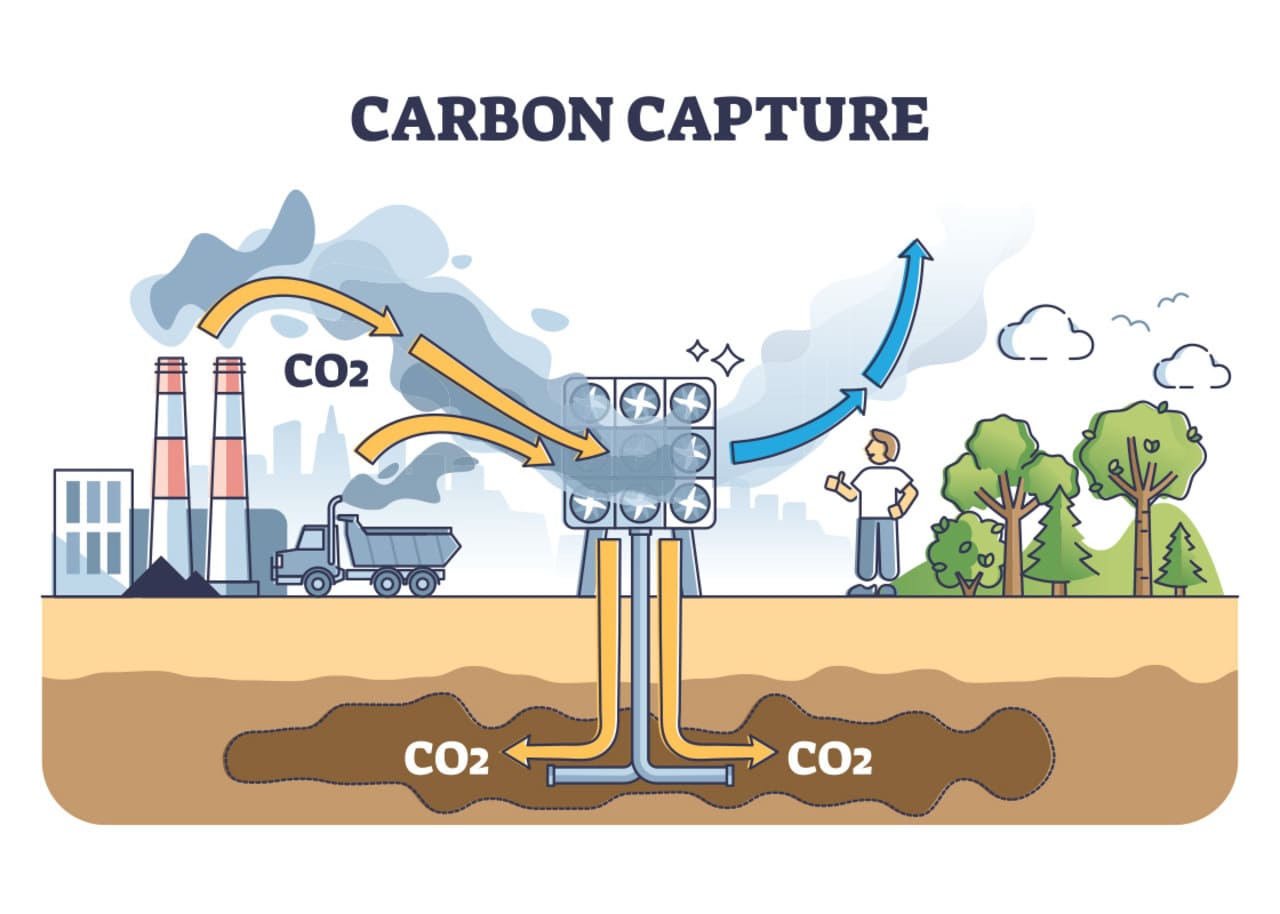Offset Carbon Footprint: Mitigate Climate Change

Discover how to offset carbon footprint and make a positive impact on the environment. Take action today to neutralize your emissions and contribute to a greener future. Explore effective carbon offset strategies and join the movement to combat climate change.
1. Overview of offset carbon footprint
In today's world, carbon emissions have become a pressing issue directly contributing to climate change. A carbon footprint refers to the total amount of greenhouse gas emissions, particularly carbon dioxide (CO2), produced by human activities such as transportation, energy consumption, and industrial processes. These emissions trap heat in the Earth's atmosphere, leading to rising temperatures and adverse effects on our planet.
To mitigate climate change, offset carbon emissions is one of the crucial solutions. It involves taking action to reduce or eliminate the equivalent amount of carbon dioxide or other greenhouse gasses emitted into the atmosphere. By the way to offset carbon footprint, we can effectively neutralize our environmental impact and contribute to the overall goal of combating climate change.
2. Major sources of carbon emissions
Understanding the major sources of carbon emissions is essential for identifying areas where the effort to offset carbon footprint can be focused. Here are some of the key sources:
a. Transportation: The transportation sector is a significant contributor to carbon emissions. Vehicles running on fossil fuels, such as gasoline and diesel, release substantial amounts of CO2 into the atmosphere. This includes emissions from cars, trucks, ships, airplanes, and trains.
b. Energy Consumption: The production and consumption of energy from fossil fuel sources, such as coal, oil, and natural gas, contribute significantly to carbon emissions. This includes emissions from power plants, heating and cooling systems, and other energy-intensive processes.
c. Industrial Processes: Certain industries, such as manufacturing, mining, and construction, emit substantial carbon dioxide and other greenhouse gasses during their operations. These emissions result from the use of fossil fuels, chemical reactions, and other industrial activities.
d. Residential and Commercial Buildings: Energy consumption in residential and commercial buildings for heating, cooling, lighting, and appliances contributes to carbon emissions. Inefficient buildings and the use of non-renewable energy sources intensify these emissions.
e. Agriculture and Land Use: Agricultural practices, including livestock production, deforestation, and land clearing, contribute to carbon emissions. Methane (CH4) emissions from livestock and nitrous oxide (N2O) emissions from fertilizers and soil management practices are significant contributors.
3. Effective Carbon Offset Strategies
To offset carbon footprint effectively and mitigate the impact of climate change, a combination of various strategies and actions is necessary. Here, we explore different carbon offset footprint methods and provide practical tips for individuals and businesses to reduce their carbon footprint.
3.1 Explore Various Carbon Offset Methods
a. Renewable Energy Projects: Investing in renewable energy sources like solar, wind, hydroelectric, and geothermal power can significantly reduce carbon emissions. Supporting and participating in renewable energy projects help replace fossil fuel-based energy production with clean and sustainable alternatives.
b. Reforestation and Afforestation: Planting trees and restoring forests play a crucial role in offsetting carbon emissions. Trees absorb carbon dioxide through photosynthesis, effectively sequestering carbon from the atmosphere. Reforestation initiatives involve planting trees in areas that were previously forested, while afforestation involves establishing forests in areas that were not forested.
c. Energy Efficiency Measures: Improving energy efficiency in buildings, appliances, and transportation can lead to significant carbon emission reductions. Energy-efficient practices include using energy-efficient light bulbs, appliances, and HVAC systems, optimizing insulation, reducing energy waste, and adopting efficient transportation methods such as carpooling or using public transportation.
d. Methane Capture and Utilization: Methane is a potent greenhouse gas with a high warming potential. Capturing and utilizing methane emitted from sources like landfills, wastewater treatment plants, and agricultural operations can help mitigate its impact. Methods include capturing methane for energy production or converting it into other useful products.
e. Carbon Capture and Storage (CCS): CCS technologies capture carbon dioxide emissions from industrial processes or power plants and store them underground or use them for industrial purposes. CCS has the potential to reduce carbon emissions significantly, particularly in sectors where alternative low-carbon technologies are not readily available. 
Utilizing carbon capture and storage technology in one of three key strategies to achieve Net zero 2050, besides carbon credit and renewable energy applied. This main characteristics, accidentally, can be found in the functions of byproducts such as: coffee ground, sugar cane trash, rice husk,… With the advanced researching and development, Air X is the leading company in Vietnam successfully made daily products like cups, shoes, masks,…most from these materials. 
3.2 Practical Tips to Reduce Carbon Footprint
a. Energy Conservation: Conserve energy by turning off lights when not in use, unplugging electronic devices, and using energy-efficient appliances. Optimize heating and cooling systems and insulate buildings to reduce energy consumption.
b. Sustainable Transportation: Reduce carbon emissions by choosing sustainable transportation options like walking, cycling, or using public transportation whenever possible. Carpooling and combining errands into a single trip can also help reduce individual carbon footprints.
c. Renewable Energy Adoption: Install solar panels or invest in renewable energy options for homes and businesses. Using clean energy sources directly reduces reliance on fossil fuels and contributes to a lower carbon footprint.
d. Waste Reduction and Recycling: Reduce waste generation by practicing recycling, composting, and minimizing single-use plastics. Adopting sustainable consumption habits and supporting businesses with eco-friendly practices can also make a significant impact.
e. Education and Awareness: Stay informed about climate change and carbon offset practices. Share knowledge with others, raise awareness about the importance of reducing carbon footprints, and inspire collective action in communities and workplaces.
By implementing these practical tips and supporting various carbon offset methods, individuals and businesses can make a meaningful contribution to reducing their carbon footprint and combating climate change. Every small action adds up and helps build a more sustainable future for generations to come.
4. How to get involved in offset carbon footprint
Getting involved to offset carbon footprint is a crucial step towards making a positive impact on the environment and combating climate change. Here's how individuals can participate and contribute to carbon offset efforts:
a. Research and Choose Reputable Organizations: Begin by researching organizations and platforms that facilitate carbon offsetting projects. Look for reputable and certified entities that adhere to internationally recognized standards, such as the Verified Carbon Standard (VCS), Gold Standard, or Climate Action Reserve. These organizations ensure transparency, credibility, and accountability in carbon offset projects.
b. Support verified carbon offset projects: Once you have identified reliable organizations, consider supporting their carbon offset projects. These projects can range from renewable energy installations and reforestation initiatives to methane capture and energy efficiency programs. Choose projects that align with your values and contribute to the reduction of carbon emissions in sectors that have a significant impact.
c. Calculate and offset carbon footprint personally: Many organizations and platforms offer tools and calculators to estimate your personal carbon footprint. By providing data on your lifestyle, energy consumption, transportation habits, and more, these tools calculate your emissions and offer options to offset them. Consider purchasing carbon offsets equivalent to your estimated emissions to neutralize your carbon footprint.
d. Engage in Voluntary Carbon Offset Programs: Explore voluntary carbon offset programs that allow individuals to directly offset their carbon emissions. These programs often offer options to support specific projects or invest in carbon credits that represent a reduction in greenhouse gas emissions. Engaging in voluntary offset programs demonstrates a personal commitment to sustainability and encourages others to do the same.
e. Advocate and Raise Awareness: Spread the word about the importance to offset carbon footprint and the need for collective action. Encourage friends, family, and colleagues to participate in carbon offset initiatives. Utilize social media, blogs, or community events to educate and raise awareness about the benefits of offsetting carbon emissions and mitigating climate change.
Taking action to offset carbon footprint are impactful ways to contribute to a sustainable future. By supporting reputable organizations, offsetting personal carbon footprints, and advocating for change, individuals can make a tangible difference in reducing greenhouse gas emissions and promoting a greener world.
It is important to remember that offsetting carbon footprint is just one part of a larger sustainable lifestyle. Making conscious choices in energy consumption, transportation, waste management, and consumption habits can further reduce our carbon footprints and create a positive environmental impact.
Learn more: Reduce Carbon Footprint: Small Changes, Big Impact
5. Contact us
AirX is the world’s first carbon-negative bio-material made from coffee grounds manufacturer.
We specialize in producing bio-based composites using recycled carbohydrates derived from by-products such as coffee grounds, coconut husk, husk, and bamboo. Our goal is to promote sustainability through the use of eco-friendly materials.
We are always here to help and provide the best service possible. If you have any questions or would like to receive advice and feedback directly from our sales staff, please do not hesitate to contact us. You can reach us through:
- Whatsapp: +84 969 742 950
- Email: [email protected]
We look forward to hearing from you!

